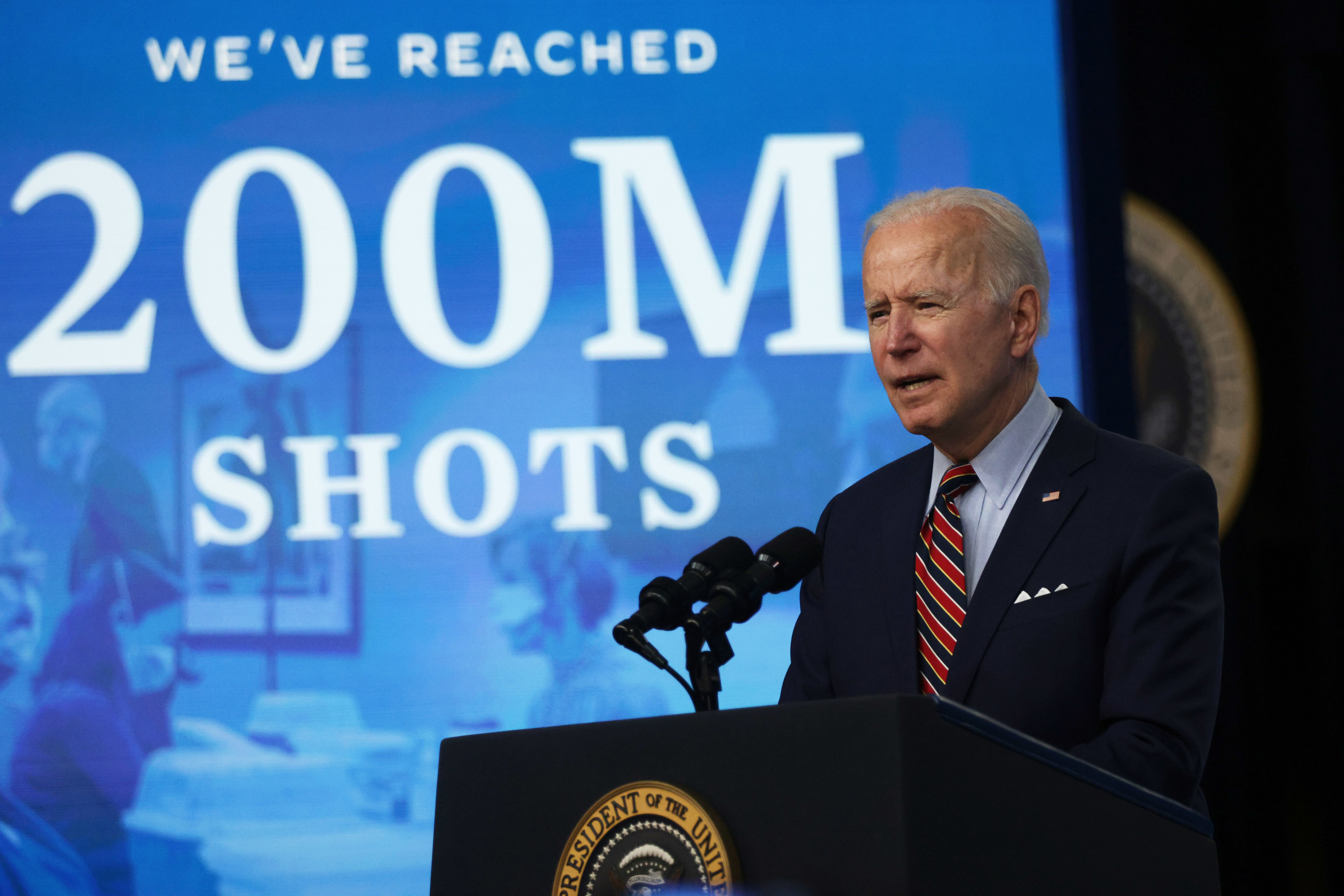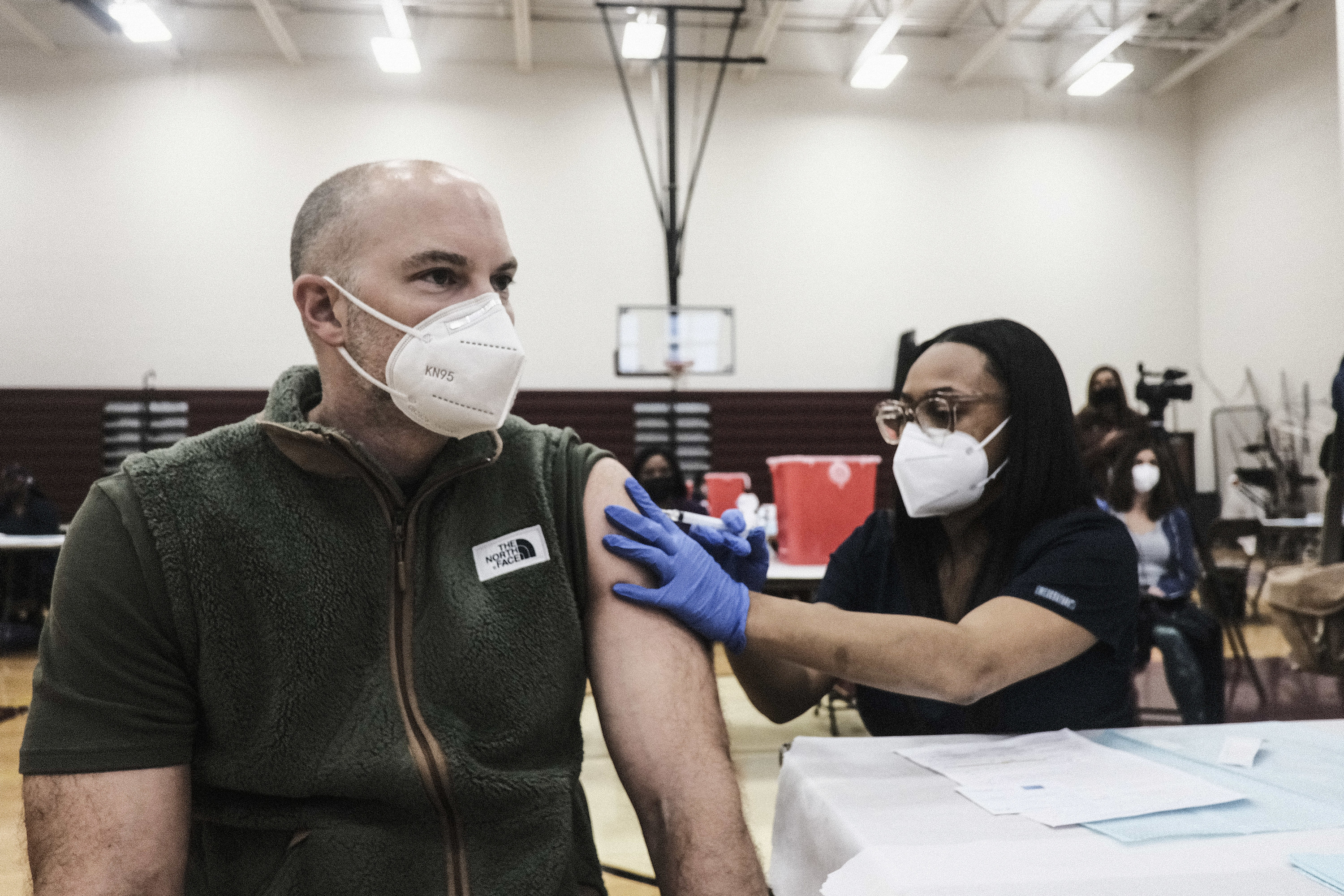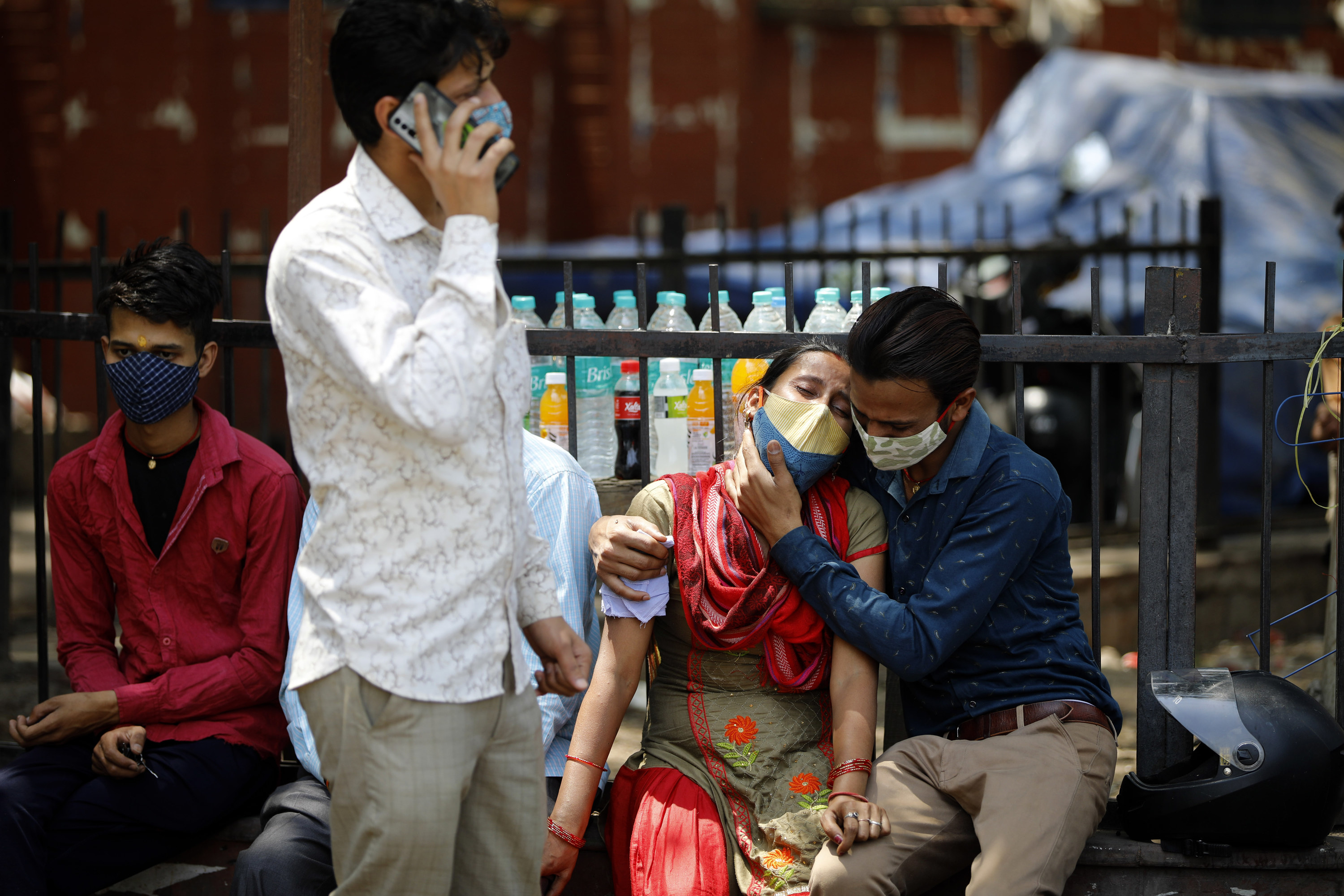If the White House’s vision goes according to plan, vaccinations will end the pandemic in the US in time for 4th of July fireworks.
Or the pandemic won’t end, and these shots will be the first of many we’ll get for years.
Or they’ll offer a brief summer respite — before a more severe version of the coronavirus catches fire.
A return to a life resembling normalcy looks closer than ever now that, as of Monday, vaccines are available to every adult in America. Around 80 million people are already fully vaccinated, and President Joe Biden said on Wednesday that the US has already reached his goal of 200 million shots in the first 100 days of his administration, eight days early.
But with half of the population still unvaccinated and COVID-19 cases once more rising, just how close are we to the pandemic ending, both in the US and across the world?
Whether the pandemic ends in the US by Independence Day — or much further in the future — will depend on the vaccines, the virus, and decisions people make, experts say. The big questions include how long the vaccines’ protection lasts, how well they fight off new coronavirus variants, and whether the entire globe can hold off these emerging threats. Then there’s the X factor of how many people will be willing to get shots.
The benchmark for a successful vaccination campaign has long been considered to be “herd immunity” — having enough people vaccinated to keep sick ones from sparking outbreaks. That might require 80% of US adults getting vaccinated, according to infectious disease researcher William Schaffner of the Vanderbilt University School of Medicine.
Other experts have urged Americans to not obsess over herd immunity. “I can't say it's going to be ‘this’ percent,” Anthony Fauci, head of the National Institute of Allergy and Infectious Diseases, said this month, although he has previously floated percentages ranging from 70% to 85%. “We'll know it when we see it. It'll be obvious.”
Getting to that turning point could take very different routes, experts told BuzzFeed News. Although the summer everyone hopes for is within reach, worse outcomes are also possible. At this pivotal moment in the crisis, a lot depends on how willing people are to help themselves by continuing to wear masks and isolating until they are fully vaccinated — and to help people around the world get vaccinated too.
“It depends on decisions we make,” Lauren Ancel Meyers, a University of Texas epidemiologist, said this month at a Stanford University symposium about herd immunity.
Here are four ways that the pandemic could end in the US:
1. The Better Ending: Vaccination Returns Life Close to “Normal”
By June, most US adults get vaccinated. The shots halt the spread of SARS-CoV-2, even the more transmissible variants. And people feel safe shopping, traveling, and visiting each other, almost like they did before the pandemic.
This is the best outcome — and it isn’t completely far-fetched. Half of US adults have received at least one shot. Even with Johnson & Johnson’s vaccine paused, more than 3 million shots are being administered a day; at that rate, every adult American could receive one by late June.
Israel offers a glimpse of this future. There, a fast-paced campaign had immunized more than half of the population by mid-April. The results have been striking in the country of 9 million, with new cases falling to around 200 a day, 2% of the January peak. Starting this weekend, an outdoor mask mandate will be lifted.

Similarly, in the US, new cases among nursing home residents dropped by 96% and deaths by 91% between December, when vaccinations started, and March. After a slow start, more than 4.8 million people in nursing facilities have received at least one shot.
Although case numbers have increased in recent weeks, Deepta Bhattacharya, an immunologist at the University of Arizona College of Medicine, predicts “a smaller bump over the next couple months that should by the summer settle down to a pretty low level of cases.”
That doesn’t mean that masking would stop. It’s worth noting that the declines in both Israel and nursing homes happened while restrictions were maintained. Under current US plans, young teens won’t start getting shots until the fall and elementary school–age children in the winter of 2022, meaning that their schools will likely keep face coverings, some virtual classes, and other restrictions for the foreseeable future.
But most partial or full closures of shops, restaurants, universities, and bars could end this summer if US cases fall like they did in Israel.
The bottom line is that the Pfizer and Moderna vaccines, which make up the great majority of US shots, have proven 90% effective in real-world studies against COVID-19. Although some people have gotten infected despite vaccination, their numbers are small: about 6,000 cases out of 84 million fully vaccinated people, or .007%, according to CDC data.
“It is not unexpected — the vaccine is not 100% protective,” Scott Lindquist, a Washington state health department official, said in a recent press briefing about “breakthrough” infections there. “But what we saw were mostly very mild symptoms, if any at all.”

And existing vaccines appear to protect against new coronavirus variants, such as the B.1.1.7 strain, according to CDC data. “If you lose a little bit of protection to a variant, but the vaccine still keeps you safe, that’s still a good result,” Bhattacharya said. Vaccines aside, he noted that a sizable chunk of the population — more than 1 in 5 Americans by one recent estimate — also has some natural immunity from past infections, though studies suggest that this protection likely isn't as long-lasting or robust as vaccination.
“I do think we’ll be OK by the summer,” said the immunologist, who is personally planning to travel to see his family in cities across the country. “Tickets booked for early July!"
In this future, the coronavirus cools down enough to be managed like the measles: a virus tamed by a vaccine that is added to childhood shot regimens, with occasional outbreaks in unvaccinated communities.
2. A Mixed Ending: Defanging, Not Defeating, the Virus
Mass vaccination delivers yet another future: the death rate from COVID-19 drops drastically, because the shots prevent severe and fatal illness, but outbreaks continue, largely among pockets of unvaccinated people, including younger people who are less targeted for vaccines or less worried about getting sick in the first place.
“A more realistic scenario is that older, more vulnerable individuals will receive a disproportionate number of doses,” said infectious disease modeler Jack Buckner of the University of California, Davis, by email. “Under these conditions additional outbreaks are more likely but the case fatality rate would be lower.”
Last month, CDC Director Rochelle Walensky was asked whether a sharp decline in death rates, with case numbers remaining high over the summer, might lessen the public’s urgency to get vaccinated. She called it a concern, but noted that children are dying of COVID-19, albeit very rarely, and that long-term complications from infections, also known as “long COVID,” plague even people with mild cases. A recent study from Sweden, for example, found 1 in 10 healthcare workers who had mild cases have felt effects, like loss of smell and taste, fatigue, and breathing problems, for months after.
“We’re going to defang the virus rather than defeat it.”
In this mixed scenario, we dodge a summer surge of deaths, but outbreaks occur in some counties or states. Herd immunity is also never quite reached in this future, because variants circle the globe every year like variations of the seasonal flu. Post–mass vaccination, the coronavirus would then enter a “mild endemic state,” where SARS-CoV-2 is reduced to a childhood cold, said Harvard epidemiologist Marc Lipsitch at the recent Stanford symposium about herd immunity. “We’re going to defang the virus rather than defeat it,” he said. “We’ll make it a nuisance that makes people a bit ill, rather than something that kills people in large numbers and causes the hospital system to groan under the weight.”
A related possibility is that vaccination only delivers immunity for a year or two and requires regular booster shots for older and younger people alike, which the heads of Pfizer and Moderna have told investors might be the case. (On Sunday, Fauci said on NBC’s Meet the Press that the FDA and CDC — not vaccine makers — will decide by fall about boosters.)
“Even if we reach the herd immunity threshold in the US or in rich countries, this virus is going to continue to circulate,” said Lipsitch.
Right now, doses are only promised on the order of hundreds of millions, and the planet is home to 7.8 billion people. The World Health Organization has warned that global undervaccination would be a catastrophic moral failure, prolonging coronavirus transmission around the world.
3. A Worse Ending: A Fourth Surge for the Summer

The better outcomes are far from inevitable. White House officials regularly say that the US is in a race between vaccination and more contagious coronavirus variants. In this scenario, we lose the race. The result: a fourth surge.
The reasons for worry are plain in case numbers that have stopped declining and are instead trending upward again, now averaging around 67,000 newly-reported infections a day. The more transmissible and dangerous B.1.1.7 coronavirus strain is quickly becoming the predominant one nationwide, now accounting for 26% of all new cases.
“We remain in a complicated stage,” the CDC’s Walensky said Monday. “On the one hand, more people in the United States are being vaccinated every single day and at an accelerated pace. On the other hand, cases and hospitalizations are increasing in some areas of the country, and cases among younger people who have not yet been vaccinated are also increasing.”
If the US falls behind on vaccinations, then a second lockdown period might result. Rising hospital admissions could lead governors and mayors to shutter bars, restaurants, and stores once again.
“We are in real risk of throwing away all the gains we have made, and losing another summer,” Debra Furr-Holden, a Michigan State University epidemiologist, told BuzzFeed News.
Her state, as well as the rest of the Upper Midwest and the Northeast, is in the thick of massive outbreaks right now. Some counties reopened bars, gyms, and restaurants too early, Furr-Holden believes, which in her view should serve as a warning to the rest of the country.
At sparrow hospital in lansing today, about to head on to the COVID floor. They’re at 100% capacity plus 50 overflow beds - highest ever during the pandemic. “Everybody’s stressed,” a pediatric specialist says.
Although 74% of US adults say they want a shot, up from half in September, that’s still not enough to achieve herd immunity, some suggest. “We have to get about 80% of adults vaccinated,” said Schaffner, the infectious disease specialist at Vanderbilt. “We've never done that with any vaccine in the United States.”
Some areas of the country are also much more resistant to vaccination than others. In states like Tennessee, Kentucky, Alabama, and Mississippi, as many as 37% of people tell pollsters they don’t want a shot. Politics clearly plays a role. Older, rural conservatives express the most hesitation, and their fears are reinforced by misinformation and fearmongering on right-wing cable channels.
“We are running into people who have expressed some hesitancy, so we have to listen to them and address their concerns,” said Schaffner, who is based in Nashville. Walensky acknowledged this week that “the administration of vaccines across the country is not uniform.”
But Andy Slavitt, the senior White House COVID-19 adviser, said he was unwilling to entertain the idea of the federal vaccination campaign shifting doses to parts of the country clamoring for shots and sending less to ones in areas where they go unused. “We are not going to quote-unquote ‘punish’ less-ready areas,” Slavitt told BuzzFeed News during a briefing this week. The key, he said, is to convey to people that while vaccines were hard to get during the initial rollout, there are now more than 60,000 vaccination sites nationwide, and at least one of them is within 5 miles of where 95% of the population lives.
Whether enough Americans will take that message to heart remains to be seen. If not, we may only reach herd immunity after another painful surge.
4. The Bad Ending: After the Summer, Global Variants Revive the Pandemic

Then there’s the worst-case scenario. In a mostly unvaccinated world, a new and more deadly coronavirus variant — or variants — overpowers vaccines and restarts the global pandemic all over again. The US, along with everyone else, has to begin again with new vaccines.
“Coronavirus mutates a lot — they can do it in humans, they can do it in animals — and the question is how important are these mutants going to be,” Stanford University infectious disease expert Julie Parsonnet said at the herd immunity symposium held at her university. “We don't live just in Palo Alto, or just in California, or just in the United States. We live in a world where there are a lot of unvaccinated people, and as long as we don't focus on the world more globally, we're going to have problems.”
For now, the available vaccines are effective against the variants circulating in the US. But experts are surprised at the speed at which more transmissible ones have arisen, said Bhattacharya of the University of Arizona. Their arrival reflects just how widely the coronavirus has spread from host to host, each acting as a lab for new mutations to emerge.
“The places where the variants are growing, they’re not growing because they are evading the immune system, they are going nuts because there aren’t enough people that are immune,” Bhattacharya said. “Obviously this isn’t the best situation, because the longer you let this go, the better the odds that you will get some weird thing that will eventually start to grow out because it can evade the immune system.”
Last week, the White House announced a $1.7 billion effort to detect such new strains. Pfizer, Moderna, and other vaccine makers are already testing prototype booster shots that are designed explicitly against variants, such as the B.1.1.7 strain.
In the face of this threat, a recent risk analysis led by George Ioannou, an expert on veteran care at the University of Washington, offers a framework for who should get prioritized for vaccines. To prevent deaths as much as possible, people with the most severe risk factors, such as diabetes, heart failure, or kidney failure, should be given shots first, this work suggests. At the same time, if there is enough supply, vaccines should be administered as quickly and widely as possible to combat the new variants.
“You really don’t want that threat just hanging around,” Bhattacharya said.
But even in this worst case, the silver lining is that the coronavirus has nevertheless proven amenable to vaccination, he and other experts noted, unlike HIV, which for decades has thwarted vaccines. A coronavirus strain that evades the current vaccines will almost certainly be susceptible to shots that have yet to be designed.
That means vaccines will at some point deliver an end to the pandemic, no matter how many changes in work, school, and daily life it leaves behind, said Yale sociologist Nicholas Christakis, author of Apollo’s Arrow: The Profound and Enduring Impact of Coronavirus on the Way We Live.
“Eventually it will return to normal,” Christakis told BuzzFeed News. “Plagues end — they just do.” ●
